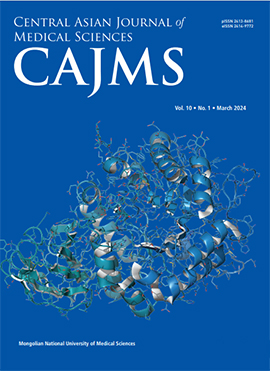Retrosternal Goiter with Acromegaly – An Airway Challenge
DOI:
https://doi.org/10.24079/cajms.2024.01.005Keywords:
Case Report, Acromegaly, Retrosternal Goiter, MedicineAbstract
Background: Patients with acromegaly may present with a goiter. Moreover, patients with acromegaly are more prone to develop severe airway obstruction and breathing difficulties during induction therapy because of enlargement of the tongue, hypertrophy of soft tissue, and mandibular prognathism as a sequela of the underlying acromegaly. Here, we have described successful airway management in patients with difficult airways with retrosternal goiter and acromegaly.
Case Presentation: A 29-year-old female presented to our tertiary care hospital with complaints of swelling in the anterior aspect of the neck, headache, amenorrhea, and a change in voice, which she noticed progressively increasing in the last ten years. Examination revealed thyroid enlargement of about 8 cm with regular margins and a smooth surface. To ensure airway safety, airway management was prepared preoperatively, including high-flow nasal oxygen on standby and ear-nose and throat surgeons on standby with small and long ventilating bronchoscopes for tracheostomy if required. A pre-extubation check scope was done, and it showed mobile bilateral vocal cords. A cuff leak test was performed, and the result was negative. The patient was successfully extubated and kept in the recovery room for seven days.
Conclusion: A careful preoperative assessment and appropriate planning are necessary during intubation and extubation in such patients to avoid life-threatening complications caused by the difficult airway.
Downloads
338
Downloads
Published
How to Cite
Issue
Section
License
Copyright (c) 2024 Mongolian National University of Medical Sciences

This work is licensed under a Creative Commons Attribution-NonCommercial 4.0 International License.




